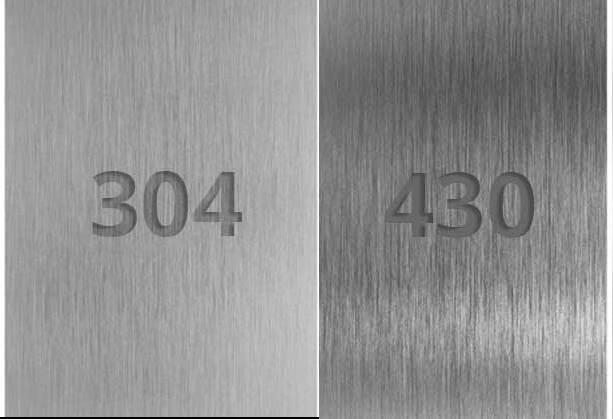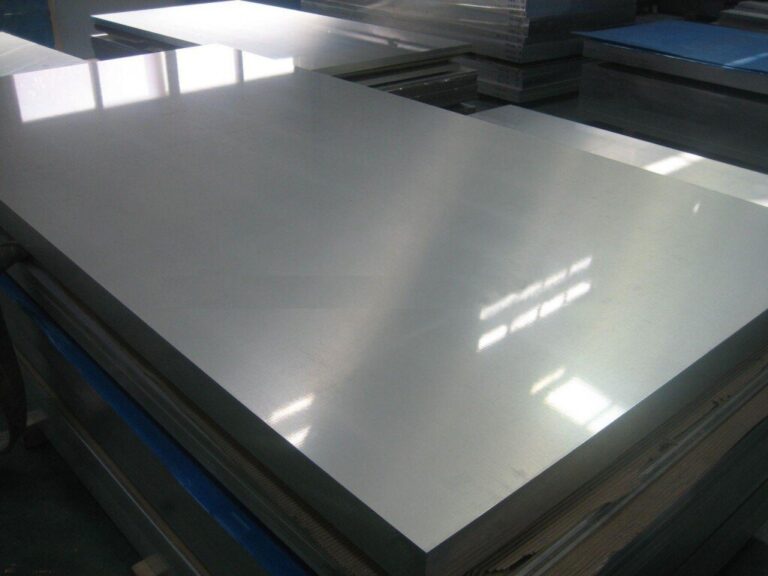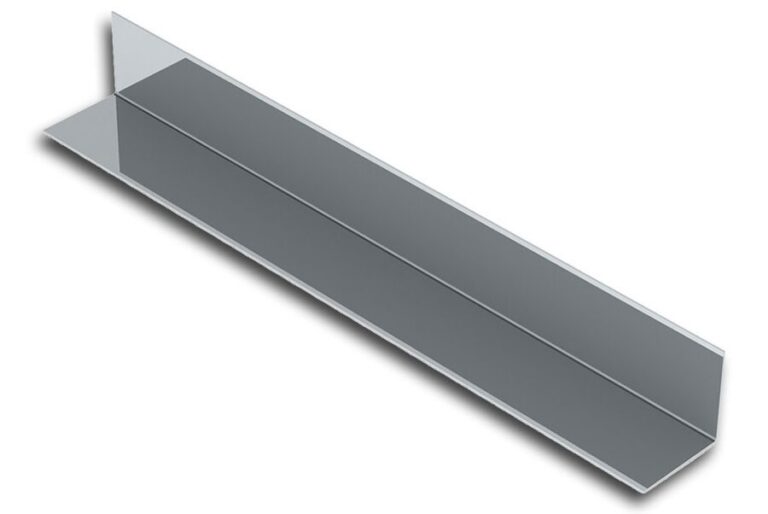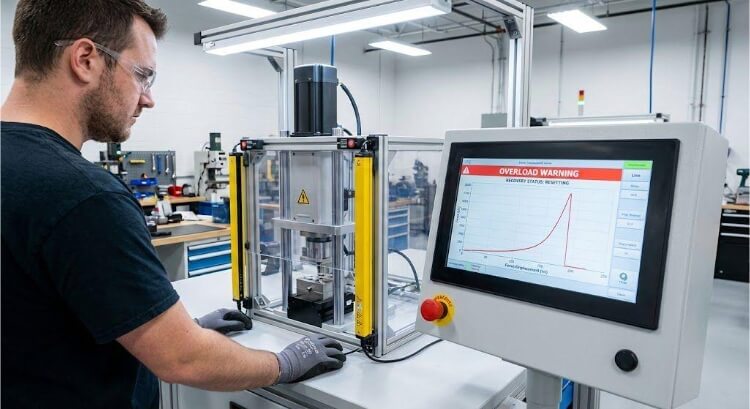Do you need help deciding between 304 and 430 stainless steel for your project? Many fabricators face this dilemma. Choosing the wrong alloy can lead to wasted resources, compromised product quality, and potential safety risks.
Both 304 and 430 stainless steel offer unique advantages. 304 excels in corrosion resistance and strength, making it ideal for harsh environments. 430, however, provides good formability and magnetic properties at a lower cost. Your choice depends on your specific application needs.
Let’s explore the key differences between these two popular stainless steel grades. We’ll help you make an informed decision for your next project.

Understanding Stainless Steel
What Is Stainless Steel?
Stainless steel is a remarkable alloy that combines strength with corrosion resistance. Its key features include:
- Iron-based alloy with a minimum of 10.5% chromium
- Forms a protective chromium oxide layer when exposed to oxygen
- Resists rust and corrosion in various environments
This unique combination of properties makes stainless steel invaluable in numerous applications.
Why Stainless Steel Is Widely Used
Stainless steel’s popularity stems from its versatile characteristics:
- Corrosion Resistance: Withstands harsh environments and chemicals
- Durability: Maintains strength and appearance over time
- Hygiene: Easy to clean and sanitize, ideal for food and medical industries
- Aesthetics: Sleek, modern appearance suitable for various designs
- Recyclability: 100% recyclable, supporting sustainable practices
These qualities make stainless steel a top choice across diverse sectors, from construction to kitchenware.
What do the different grades of steel signify?
Stainless steel grades indicate specific compositions and properties. Each grade is designed for particular uses:
300 Series (Austenitic):
- Contains nickel and chromium
- Non-magnetic
- Excellent corrosion resistance
- Examples: 304, 316
400 Series (Ferritic and Martensitic):
- Contains chromium, little or no nickel
- Magnetic
- Moderate corrosion resistance
- Examples: 430, 410
200 Series:
- Similar to the 300 series, but with manganese instead of nickel
- More affordable alternative to the 300 series
Duplex Grades:
- Combine properties of austenitic and ferritic steels
- High strength and corrosion resistance
- Example: 2205
Precipitation Hardening Grades:
- Heat-treatable for increased strength
- Example: 17-4 PH
The grade number often relates to the steel’s composition and structure. Higher numbers generally indicate more alloying elements and specialized properties.
What is 304 Stainless Steel?
Definition and Composition
304 stainless steel is an austenitic chromium-nickel alloy. It’s known for its excellent corrosion resistance and formability. This versatile material is found in various industries, from kitchenware to industrial equipment.
Chemical Elements in 304 Stainless Steel
The main components of 304 stainless steel include:
- 18-20% Chromium
- 8-10.5% Nickel
- 0.08% Carbon (max)
- 2% Manganese (max)
- 1% Silicon (max)
- 0.045% Phosphorus (max)
- 0.03% Sulfur (max)
The high chromium content creates a protective oxide layer, enhancing corrosion resistance.
Austenitic Structure and Its Implications
304’s austenitic structure gives it unique properties:
- Non-magnetic nature
- Excellent ductility
- Good weldability
- High toughness, even at low temperatures
These characteristics make 304 suitable for a wide range of applications.
Grades and Variants
Common Variants of 304 (e.g., 304L, 304H)
304 comes in several variants:
- 304L: Lower carbon content for better weldability
- 304H: Higher carbon content for improved high-temperature strength
Each variant offers specific advantages for different use cases.
Differences Between Standard and Low-Carbon Grades
The main difference lies in carbon content:
- Standard 304: Up to 0.08% carbon
- 304L: Maximum 0.03% carbon
304L reduces the risk of carbide precipitation during welding, making it preferable for welded structures.

Properties of 304 Stainless Steel
Corrosion Resistance
304 stainless steel boasts excellent corrosion resistance. This quality makes it a top choice for many applications.
Performance in Various Environmental Conditions
304 performs well in:
- Atmospheric environments
- Freshwater
- Many chemicals and food products
It resists oxidation up to 870°C (1598°F). However, it may not be suitable for marine or chloride-rich environments.
Comparison with Other Stainless Steel Grades
304 outperforms many other grades in corrosion resistance. It offers better protection than 430 in most conditions. However, higher-grade alloys like 316 may surpass it in harsh environments.
Mechanical Properties
304 stainless steel offers a good balance of strength and flexibility.
Tensile Strength and Yield Strength
- Tensile Strength: 515-720 MPa
- Yield Strength: 205 MPa (minimum)
These properties make 304 suitable for structural applications.
Ductility and Elongation Under Stress
304 exhibits high ductility:
- Elongation: 40% (minimum in 50mm)
- Good formability for complex shapes
This characteristic allows for various forming processes without cracking.
Thermal Properties
304 stainless steel handles high temperatures well.
Heat Resistance and Melting Point
- Melting Point: 1400-1450°C (2552-2642°F)
- Maintains strength at elevated temperatures
These properties make it suitable for high-temperature applications.
Thermal Conductivity and Expansion
- Thermal Conductivity: 16.2 W/m·K at 100°C
- Coefficient of Thermal Expansion: 17.2 µm/m·K (0-100°C)
These values help in designing for thermal stress and heat transfer.
Magnetic Properties
304 stainless steel is generally non-magnetic in its annealed state.
Non-Magnetic Nature and Its Applications
The non-magnetic property makes 304 ideal for:
- Electrical applications
- Medical equipment
- Areas where magnetic interference is undesirable
Influence of Cold Working on Magnetism
Cold working can induce some magnetism in 304. This effect varies with the degree of work hardening. Consider using 304L or other fully austenitic grades for applications requiring strict non-magnetic properties.
What is 430 Stainless Steel?
Definition and Composition
430 stainless steel is a ferritic, chromium-only stainless steel. It offers good corrosion resistance and formability at a lower cost than austenitic grades like 304.
Chemical Elements in 430 Stainless Steel
The main components of 430 stainless steel include:
- 16-18% Chromium
- 0.12% Carbon (max)
- 1% Manganese (max)
- 1% Silicon (max)
- 0.04% Phosphorus (max)
- 0.03% Sulfur (max)
The high chromium content provides corrosion resistance, while the low carbon ensures good formability.
Ferritic Structure and Its Characteristics
430’s ferritic structure gives it unique properties:
- Magnetic nature
- Good ductility
- Excellent formability
- Lower work hardening rate than austenitic grades
These characteristics make 430 suitable for various applications, especially for desired magnetic properties.
Grades and Variants
Overview of Different Grades of 430
430 comes in several variants:
- 430F: Improved machinability
- 430Ti: Better weldability and intergranular corrosion resistance
- 430LI: Lower interstitial elements for improved formability
Each variant offers specific advantages for different use cases.
Variants Suitable for Specific Applications
- 430F: Ideal for automatic screw machine parts
- 430Ti: Suitable for welded components in corrosive environments
- 430LI: Perfect for deep drawing applications
The choice of variant depends on the specific requirements of your project, such as formability, weldability, or machinability needs.

Properties of 430 Stainless Steel
430 stainless steel offers unique properties that make it suitable for various applications. Let’s examine these characteristics in detail.
Corrosion Resistance
430 stainless steel provides moderate corrosion resistance and is suitable for many environments.
Susceptibility to Pitting and Crevice Corrosion
430 stainless steel shows:
- Moderate resistance to pitting corrosion
- Limited resistance to crevice corrosion
It performs well in mildly corrosive environments but may struggle in chloride-rich or highly acidic conditions.
Performance in Non-Aggressive Environments
In non-aggressive settings, 430 stainless steel excels:
- Good resistance to atmospheric corrosion
- Suitable for indoor applications
- Performs well in freshwater
Its corrosion resistance is adequate for many everyday applications.
Mechanical Properties
430 stainless steel offers a balance of strength and formability.
Tensile Strength and Yield Strength of 430
Typical mechanical properties include:
- Tensile Strength: 450-600 MPa
- Yield Strength: 205-310 MPa
These properties make 430 suitable for various structural applications.
Ductility and Formability Considerations
430 stainless steel exhibits:
- Good ductility
- Excellent formability
- Lower work hardening rate than austenitic grades
These characteristics allow for easy shaping and forming in manufacturing processes.
Thermal Properties
Four hundred thirty stainless steel handles heat well, making it suitable for various thermal applications.
Heat Conductivity and Resistance
Key thermal properties include:
- Thermal Conductivity: 26.1 W/m·K at 100°C
- Maximum Use Temperature: 816°C (1500°F) in continuous service
These properties make it suitable for heat transfer applications.
Coefficient of Thermal Expansion
430 stainless steel has:
- Coefficient of Thermal Expansion: 10.4 µm/m·K (0-100°C)
This lower expansion rate compared to austenitic grades can be advantageous in certain design situations.
Magnetic Properties
430 stainless steel is strongly magnetic, setting it apart from many other stainless steels.
Strong Magnetic Nature and Its Implications
The magnetic properties of 430 stainless steel:
- Allow for magnetic attachment
- Enable use in electromagnetic applications
- Can affect welding processes
These characteristics influence both its applications and fabrication methods.
Applications Leveraging Magnetic Properties
The magnetic nature of 430 makes it ideal for:
- Magnetic knife strips
- Magnetic door seals
- Components in electric motors
- Magnetic shielding
This property opens up unique application possibilities that are not available with non-magnetic stainless steel.
304 vs 430 Stainless Steel: A Comparison of These Stainless Steel Grades
Let’s compare 304 and 430 stainless steel to help you choose the suitable alloy for your project.
Chemical Composition Differences
The chemical makeup of these alloys significantly affects their properties.
Critical Differences in Chromium and Nickel Content
- 304: 18-20% Chromium, 8-10.5% Nickel
- 430: 16-18% Chromium, No Nickel
The presence of nickel in 304 is a major distinguishing factor.
Impact of Composition on Performance
The composition differences lead to the following:
- 304: Better corrosion resistance, non-magnetic
- 430: Lower cost, magnetic properties
These compositional variations determine their suitability for different applications.
Corrosion Resistance
Corrosion resistance is a crucial factor in material selection.
Comparative Analysis in Various Conditions
- 304: Superior overall corrosion resistance
- 430: Good resistance in milder environments
304 generally outperforms 430 in corrosive conditions.
Suitability for Harsh Environments
- 304: Suitable for marine environments, acids, and chlorides
- 430: Better for indoor applications and non-aggressive settings
Choose 304 for more demanding corrosive environments.
Mechanical Properties Comparison
Both alloys offer unique mechanical characteristics.
Strength and Durability in Structural Applications
- 304: Higher tensile strength (515-720 MPa)
- 430: Lower tensile strength (450-600 MPa)
304 is often preferred for high-stress applications.
Workability and Fabrication Ease
- 304: Excellent formability, good weldability
- 430: Excellent formability, requires special welding techniques
Both are workable, but 430 may sometimes be more straightforward to form.
Cost and Availability
Economic factors play a role in material selection.
Price Differences and Factors Influencing Cost
- 304: Generally more expensive due to nickel content
- 430: A more cost-effective option
Nickel price fluctuations significantly impact the cost of 304.
Availability and Supply Chain Considerations
- 304: Widely available, standard in many industries
- 430: Good availability, especially in consumer goods sectors
Both are readily available, but 304 may have more diverse supplier options.
304 vs 430 Stainless Steel: Quick Comparison
Here’s a quick comparison table of 304 vs 430 stainless steel based on the information provided:
| Characteristic | 304 Stainless Steel | 430 Stainless Steel |
|---|---|---|
| Composition | 18-20% Cr, 8-10.5% Ni | 16-18% Cr, No Ni |
| Structure | Austenitic | Ferritic |
| Corrosion Resistance | Superior overall | Good in mild environments |
| Tensile Strength | 515-720 MPa | 450-600 MPa |
| Magnetic Properties | Non-magnetic | Strongly magnetic |
| Formability | Excellent | Very good |
| Weldability | Good | Requires special techniques |
| Cost | Higher | Lower |
| Best Uses | Marine environments, harsh conditions | Indoor applications, mild environments |
| Heat Resistance | Up to 870°C | Up to 816°C |
| Thermal Conductivity | 16.2 W/m·K at 100°C | 26.1 W/m·K at 100°C |
| Availability | Widely available | Good availability |
304 vs 430 Stainless Steel: How to Choose the Right Alloy
Considerations Based on Application
Selecting between 304 and 430 stainless steel depends mainly on your specific needs.
Environmental Factors and Corrosion Resistance Needs
- 304: Excels in corrosive environments
- 430: Suitable for milder conditions
Choose 304 for coastal areas or chemical processing. Opt for 430 in less demanding settings.
Strength and Durability Requirements
- 304: Higher strength and toughness
- 430: Good strength but less ductile
Select 304 for structural applications. 430 works well for decorative or light-duty uses.
Cost vs Performance
Balancing cost and performance is crucial in alloy selection.
Budget Constraints and Long-Term Investment
- 304: Higher initial cost, better long-term value
- 430: More affordable upfront
Consider lifecycle costs when making your decision.
When to Opt for 304 Over 430 and Vice Versa
Choose 304 when:
- Corrosion resistance is paramount
- High strength is required
- Long-term durability is essential
Opt for 430 when:
- Magnetic properties are needed
- Budget is tight
- Corrosion resistance requirements are moderate
Fabrication and Maintenance
Consider fabrication ease and ongoing maintenance if you choose.
Ease of Fabrication and Welding Concerns
- 304: Excellent weldability, easy to form
- 430: Good formability, but more challenging to weld
304 is preferable for complex fabrications. 430 works well for simple shapes.
Maintenance Requirements and Lifecycle Costs
- 304: Lower maintenance, longer lifespan
- 430: May require more frequent replacement in harsh conditions
Factor in long-term maintenance when calculating total costs.
Your specific application will guide your choice between these two versatile alloys.
Conclusion
Choosing between 304 and 430 stainless steel depends on your specific application needs. 304 offers superior corrosion resistance and strength, ideal for harsh environments and high-stress applications. It’s the go-to choice for marine use, chemical processing, and food handling.
430, on the other hand, provides good corrosion resistance in milder conditions at a lower cost. Its magnetic properties and formability suit household appliances, automotive trim, and architectural applications.
Consider your project’s requirements carefully. Factor in the environment, stress levels, and budget constraints. Both alloys have their strengths, and the right choice will ensure optimal performance and longevity for your application.
FAQs
Which Is More Rust-Resistant: 430 or 304?
304 stainless steel is more rust-resistant than 430. Its higher nickel content and austenitic structure provide superior corrosion resistance in various environments. 304 performs better in harsh conditions, including exposure to chlorides and acids.
Can 430 Stainless Steel Be Used in Food Processing?
Yes, 430 stainless steel can be used in food processing, but with limitations. It’s suitable for dry food handling and some kitchen appliances. However, for applications involving acidic foods or harsh cleaning chemicals, 304 is often preferred due to its better corrosion resistance.
Is 430 Stainless Steel Magnetic?
Yes, 430 stainless steel is magnetic. Its ferritic structure gives it magnetic solid properties, unlike austenitic grades like 304. This magnetic nature makes 430 suitable for applications where magnetic properties are desired, such as magnetic knife holders or specific automotive components.
Hey, I'm Kevin Lee

For the past 10 years, I’ve been immersed in various forms of sheet metal fabrication, sharing cool insights here from my experiences across diverse workshops.
Get in touch

Kevin Lee
I have over ten years of professional experience in sheet metal fabrication, specializing in laser cutting, bending, welding, and surface treatment techniques. As the Technical Director at Shengen, I am committed to solving complex manufacturing challenges and driving innovation and quality in each project.




